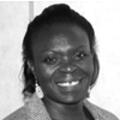Policy Options to Enable Fertilizer Industry Growth

Event Information
An efficient, dynamic fertilizer industry underpins a strong agricultural sector and a growing economy. Few industries are so vital to farm productivity and food security, yet are so frequently constrained by varying approval standards, unstable government policies, and volatile trade flows.
Despite public policies and investment intended to promote fertilizer use, the distribution and adoption of fertilizer remains low across many developing countries. USAID’s Enabling Agricultural Trade (EAT) Project, partnered with the African Fertilizer & Agribusiness Partnership (AFAP) to address this issue through a policy brief that informs policymakers and donors about the conditions necessary to enable a dynamic fertilizer industry that meets farmers’ needs and fosters growth in the agricultural sector.
The brief highlights a series of policy reforms that governments can undertake to enable a more vibrant private sector-led fertilizer industry, and provides examples of both effective and ineffective government activities. The central tenet of this paper is that government policies and investments must support – not control – a dynamic, private sector-led fertilizer industry to promote the safe, sufficient, and sustainable supply of fertilizer.
The brief finds that a strong legal and regulatory framework, coupled with public policies and investments that reduce the cost of finance and trade, mitigate risks for fertilizer suppliers and encourage long-term investments in equipment and in building distribution networks. At the same time, fertilizer demand must be promoted with an integrated approach to increasing the profitable use of fertilizer by farmers through agricultural research, extension services, and linking farmers to output markets.
At this seminar, Maria Wanzala of the African Fertilizer and Agribusiness Partnership (AFAP) outlined the findings of the brief; panelists James Oehmke of the USAID Bureau for Food Security, Peter Heffernan of IFDC, and Raymond Hoyum of Advantage International discussed the findings; and EAT’s Amy D’Angelo moderated and engaged the audience in a question and answer session on the topic.
Moderated by the EAT project:
The Enabling Agricultural Trade (EAT) project, funded by USAID, supports the U.S. government’s global efforts to create conditions for agriculture-led growth. USAID established EAT based on substantial academic and field experience suggesting that a sound legal, regulatory, and institutional environment is a pre-requisite to economic growth in the agricultural sector. EAT offers policy analysis and support for the implementation of AgBEE reforms that encourage business start-up and growth across the agricultural sector. Visit our website at www.eatproject.org.

Speakers
Maria Wanzala

African Fertilizer and Agribusiness Partnership (AFAP)
Peter Heffernan

IFDC
Raymond Hoyum

Advantage International
David Atwood

USAID Bureau for Food Security